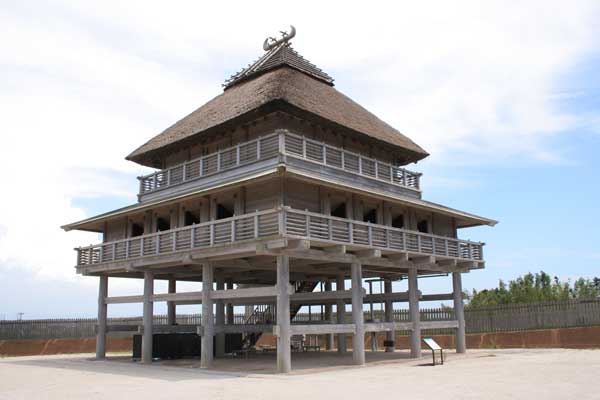Japan History
Pre-history
The first signs of civilization appeared around 10,000 BC with the Jomon culture, characterized by a Mesolithic to Neolithic semi-sedentary hunter-gatherer lifestyle of pit dwelling and a rudimentary form of agriculture. Weaving was still unknown and clothes were often made of bark. Around that time, however, the Jomon people started to make clay vessels, decorated with patterns made by impressing the wet clay with braided or unbraided cord and sticks (Jomon means “patterns of plaited cord”). This led to the introduction of the earliest known type of pottery in the world.

Classical Era
The Japanese did not start writing their own histories until the 5th and 6th centuries, when the Chinese writing system, Buddhism, advanced pottery, ceremonial burial, and other aspects of culture were introduced by aristocrats, artisans, scholars, and monks from Baekje, one of the Three Kingdoms of Korea.
The beginning of Japanese historical writing culminated in the early 8th century with the massive chronicles, Kojiki (The Record of Ancient Matters, 712) and Nihonshoki (Chronicles of Japan, 720). Though Japan did not appear in written history until 57, when it is first mentioned in Chinese records as the nation of “Wa” (in Chinese, “Wo”), or “dwarf state”, these chronicles tell a much different and much more legendary history of Japan, deriving the people of Japan from the gods themselves.
According to traditional Japanese mythology, Japan was founded in the 7th century BC by the ancestral Emperor Jinmu, a direct descendant of the Shinto deity Amaterasu. It is claimed that he started a line of emperors that remains unbroken, to this day. However, historians believe the first emperor who actually existed was Emperor Ojin, though the date of his reign is uncertain. Nonetheless, for most of Japan’s history, real power has been in the hands of the court nobility, the shoguns, the military, or, more recently, prime ministers.
Through the Taika Reform Edicts of 645, Japanese intensified the adoption of Chinese cultural practices and reorganized the government in accordance with the Chinese administrative structure. This paved the way for the dominance of Confucian philosophy in Japan until the 19th century.
The Great Buddha at Todaiji, Nara, originally cast in 752. The Nara period of the 8th century marked the first strong Japanese state, centered around an imperial court, in the city of Heijo-kyo (now Nara). The imperial court later moved briefly to Nagaoka, and later Heian-kyo (now Kyoto), starting a “golden age” of classical Japanese culture called the Heian period which lasted for nearly four centuries and was characterized by the regency regime of the Fujiwara clan.
